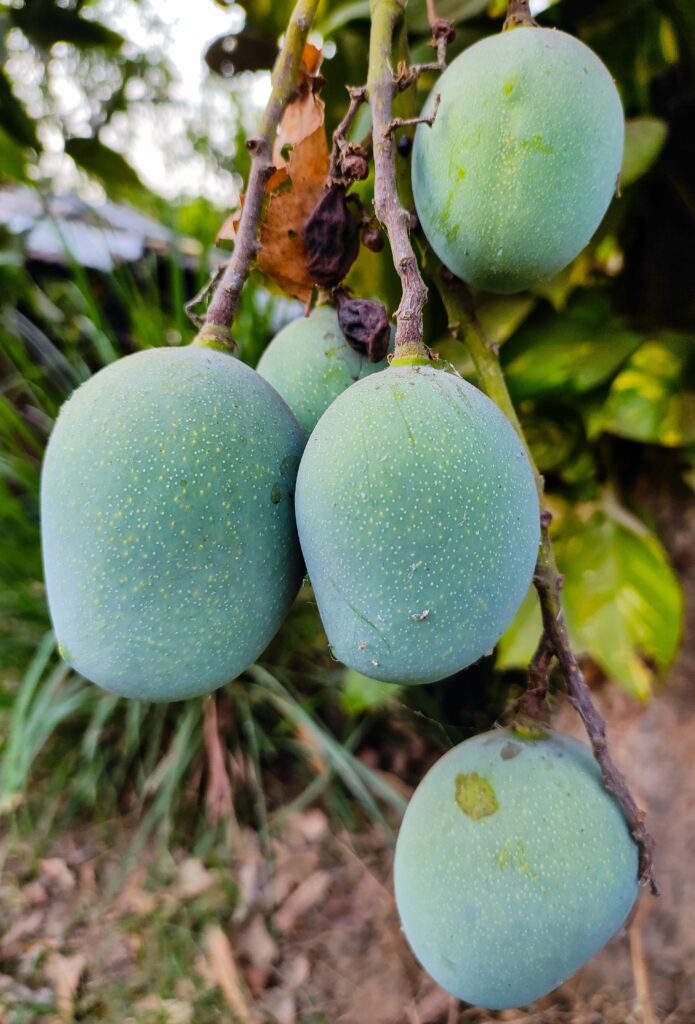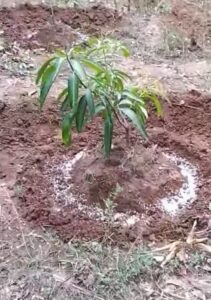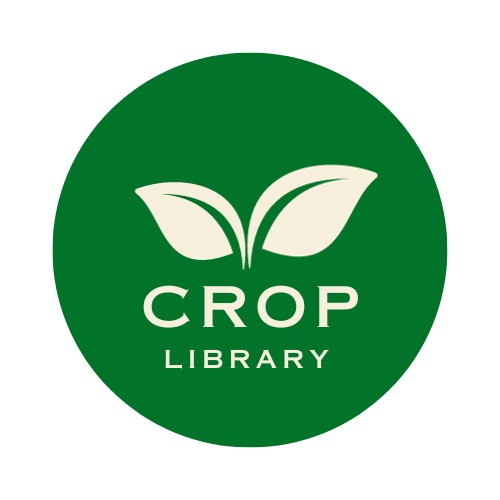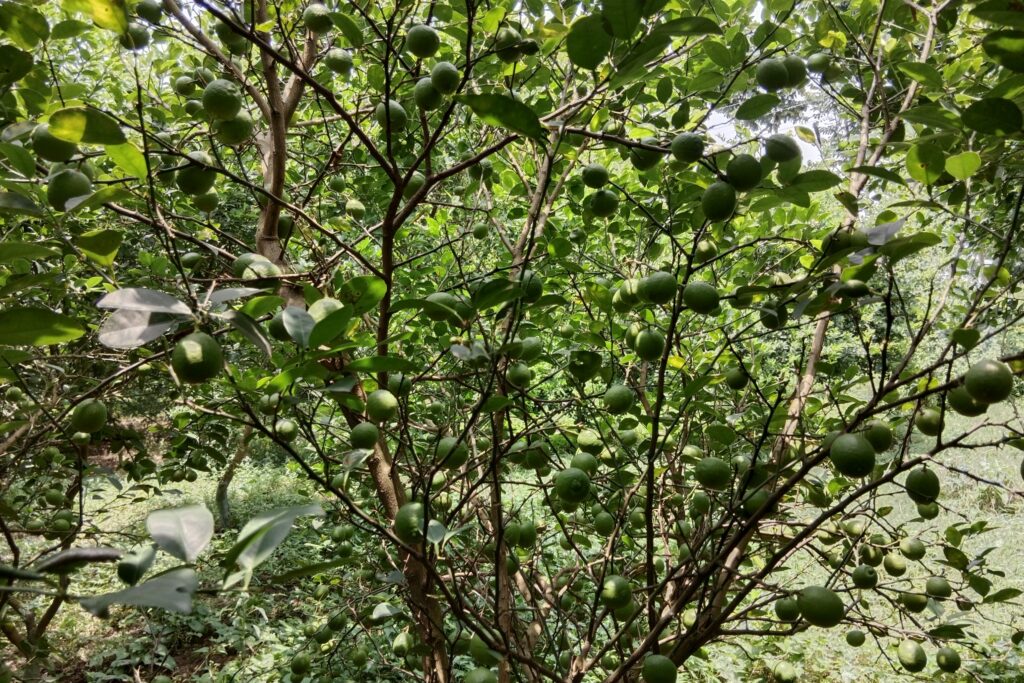Introduction
Mango (Mangifera indica L.) stands among the top five most beloved fruits globally and is predominantly cultivated in tropical and subtropical regions. The application of mango fertilizers helps to maintain ideal nutrient levels, which is beneficial for improving fruit quality.

Fruit trees generally require less fertilizer than cereals and vegetables, but providing the recommended nutrients is crucial for a bountiful harvest. For mango cultivation, optimal yields and quality are achieved through a balanced nutrient application at key growth stages using appropriate methods.
Before adding fertilizer, it is necessary to do a soil test to know the soil’s nutritional health. The macronutrients found in mango fruit pulp are in the following order: K>N>P>Mg>Ca. This pattern indicates that mango plants need more potassium (K) compared to nitrogen (N) and phosphorus (P) during the fruit development phase, and one should apply the fertilizer accordingly.
Apart from the three main nutrients (N, P, and K), compost fertilizers, biofertilizers, and trace elements like zinc and boron are also important for the nutritional value of mangos. Think of them as the background players in the nutritional symphony that directs the growth of plants.
Nine best mango fertilizers for abundant fruit production.
(Note: The fertilizer doses provided in this article are for 7-year-old plants. Adjust the fertilizer amount based on your plant’s age. For plants older than 7 years, consider adding 10-15% more fertilizer each year, and for younger plants, reduce the fertilizer dose by 10-15% annually.)
Farmyard Manure (FYM)
Farmyard Manure (FYM) is an organic fertilizer rich in organic matter, essential for improving soil structure and water retention. Applying 50kg per plant in three split doses supports steady nutrient release throughout the growing season, promoting overall tree health and helping in better fruit set in the tree.
Azospirillium (Nitrogen Fixing Bacteria)
Azospirillium is a nitrogen-fixing bacteria (biofertilizer) that enhances nitrogen availability in the mango trees. Applying 250g per plant in three split doses, particularly during key growth periods, supports nitrogen fixation, crucial for vigorous foliage growth and improved fruit production.
Zinc Sulphate (ZnSO4)
As a vital micronutrient, zinc facilitates proper flowering, ensuring successful pollination and increased fruit set. It is a cofactor for enzymes, supporting nutrient metabolism and overall plant growth. During early fruit development, zinc promotes cell growth, contributing to uniform fruit maturation and quality.
Applying 23g of Zinc Sulphate per plant in three split doses ensures a steady supply, enhancing the tree’s overall resilience and productivity.
Nitrogen (N)
Nitrogen is vital for robust vegetative growth in mango trees. Applying 500g of Nitrogen or 1100g of Urea per tree in three split doses fosters healthy branches, leaves, and shoots, ensuring a vibrant orchard.
Mango yield increases with nitrogen and potassium within a certain range. A moderate reduction in fertilizer enhances fruit morphology and quality, while insufficient application lowers yield and quality.
Nitrogen’s impact is notable in the vegetative phase, crucial for reproductive flushes and viable fruit-bearing panicles. Adequate nitrogen fosters shoot development, while deficiency results in retarded growth and reduced fruit production. Excessive nitrogen causes overgrowth, floral issues, yield loss, and increased disease susceptibility.
Phosphorus (P)
Phosphorus is essential for flowering, fruiting, and root development in mango trees. Applying 250g of P2O5 or 600g of Triple Super Phosphate (TSP) per tree in three split doses enhances reproductive capacity, resulting in a healthier fruit yield.
Phosphorus promotes root system development, robust trunk production, and the maturation of fruits.
Deficiency leads to a weaker root system, poor water and nutrient uptake, and delayed fruit maturation with a coarse texture. Symptoms include slowed growth, premature leaf falling, branch drying, and reduced yield. Phosphorus ensures the energy flow critical for budding blooms and overall tree vitality.
Potassium (K)
Potassium is crucial for fruit quality, size, and disease resistance. Applying 250g of Potassium or 400g of Muriate of Potash (MOP) per tree in three split doses enhances fruit flavor, color, and overall tree vitality.
Adequate potassium improves fruit quality, including skin color, aroma, size, and shelf life. It also boosts plant resilience to stress like dryness, cold, salinity, and diseases. However, excess potassium may disrupt calcium (Ca) and magnesium (Mg) levels, causing browning on older leaves’ edges and apex.
Excessive calcium and potassium application reduces magnesium uptake. Potassium deficiency manifests in small red spots on the oldest leaves, making them smaller and thinner. Severe potassium shortage causes spot coalescence and necrosis along the leaf edges.
Phosphorus Solubilizing Bacteria (PSB)
Phosphorus-solubilizing bacteria enhance the availability of phosphorus in the soil. By applying 250g per plant in three split doses, you promote better phosphorus uptake by the mango trees, supporting root development and overall nutrient absorption.
Incorporating these fertilizers as per the recommended rates and schedule can significantly contribute to the health and productivity of your mango orchard. Adjustments based on specific soil conditions and tree requirements may be made under expert guidance.
Calcium (Ca)
Calcium is essential for the uptake of nitrogen, the transportation of carbohydrates and amino acids, and the structural maintenance of plant cell walls and membranes. Increased calcium is necessary for fruits, especially during growth, to preserve pulp consistency. This makes the fruits appear better, feel better, and have fewer physiological disruptions. Effective root uptake is essential, particularly in the early stages of fruit development and post-harvest flush. Since foliar treatments are less effective during this time, calcium should be easily available in the soil. It is advised to feed calcium before the fruit reaches maturity, as the ruptured xylem in mature fruits prevents calcium from moving freely. Fruit quality is guaranteed by optimal soil availability.
Boron (B)
Boron is the micro-nutrient that most affects mango productivity and fruit quality. The application of 2 kg/ha of B (as borax) to the soil promotes significant increases in the production of the mango.
What Is the Best Time to Apply Fertilizer to Mango Tree?
An increase in the yield of mango could be achieved by adopting proper fertilizer application in split doses. Applying fertilizer in split doses allows plants to utilize nutrients properly rather than applying all fertilizer doses at one time. It is recommended to apply fertilizer in three equal split doses in mango to get more fruits during these months of the year:
March
March is the month when plants enter an active growing period from their dormant phase in winter. A general guideline is to fertilize during periods of active growth, which typically aligns with spring for mango trees, as well as for most other plants.
With reduced sunlight during winter months, plants undergo diminished photosynthesis, resulting in inadequate food production for optimal growth and development. As a result, plants enter into the dormant phase. It is recommended not to fertilize mango trees during the winter months, as they are in a dormant state and are unable to efficiently utilize nutrients.
May
Plants are growing actively during this period and can utilize nutrients properly. Additional support for fruit development may come from the application of fertilizer in mango trees during this month. In mango trees, the application of fertilizer during this period helps plants for robust growth and bear abundant fruit in the coming season.
September
The third split application of fertilizer dose is recommended for use in September.
How to Apply Fertilizer in Mango?
To find out the current amounts of nutrients in the soil, perform a soil test before applying fertilizer. This helps in optimizing the fertilizer application according to specific deficits.
Before fertilizing, make sure the tree is well watered to prevent the root from burning.
Application Methods:
When it comes to fertilizing mango trees, different application methods can be used. Here are some common methods:
Broadcast method.
Uniformly spread the fertilizer on the soil surrounding the tree. Broadcasting is suitable for fully grown trees with a substantial canopy.
Ring method or band method.
Apply the fertilizer in a circle all around the tree, keeping a gap of one to two feet from the trunk. This method is usually used for small trees or trees with a narrow canopy.

Foliar method.
This method involves spraying fertilizer or micronutrients straight onto the leaves. Usually, this approach is applied when a plant shows nutritional deficiencies.
Nutrients are required during the Flowering and Fruit development phase.
The flowering and fruit development stages in the mango are crucial phases. This phase of mango growth if fed with the right nutrients leads to an enhanced fruit set. The following nutrients should feed during these growth stages:
Flowering Stage
Phosphorus (P) becomes crucial during the flowering stage, as it supports flower and fruit development. Fertilizers with a higher phosphorus content are recommended at this stage.
Fruit Development Stage
Potassium (K) becomes essential during fruit development to support the maturation of the fruit. Fertilizers with a higher potassium content are beneficial during this phase.
Fruit Ripening Stage
While maintaining a balanced nutrient supply, reduce nitrogen levels to avoid excessive vegetative growth. Potassium remains important for enhancing fruit quality during the ripening stage.
FAQs
Q1. How can I make my mango tree grow faster?
To grow mango trees faster, you should do the following tasks:
Fertilization Application
- Apply the fertilizers mentioned above in this article.
- Apply the fertilizers equally in three spilled doses in March, May, and September.
Watering
- Provide consistent watering, especially during dry periods.
- Water deeply but avoid waterlogged conditions.
Q2. How do you know when a mango is ripe?
- Color: Look for a reddish vibrant, color that may vary by mango variety.
- Texture: Gently press the mango; it should yield slightly without being mushy.
- Fragrance: A sweet, fruity aroma near the stem is a sign of ripeness.
- Shape: Ripe mangos may become slightly more rounded as they mature.
- Weight: A ripe mango feels heavier for its size.



Pingback: Mango Farming: Comprehensive Guide for Beginners.